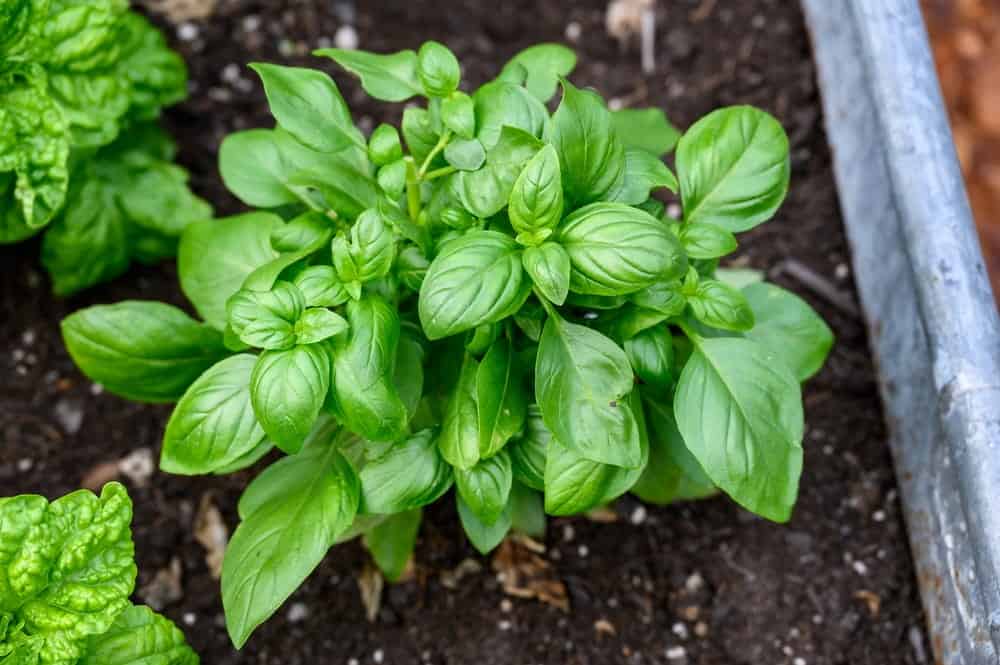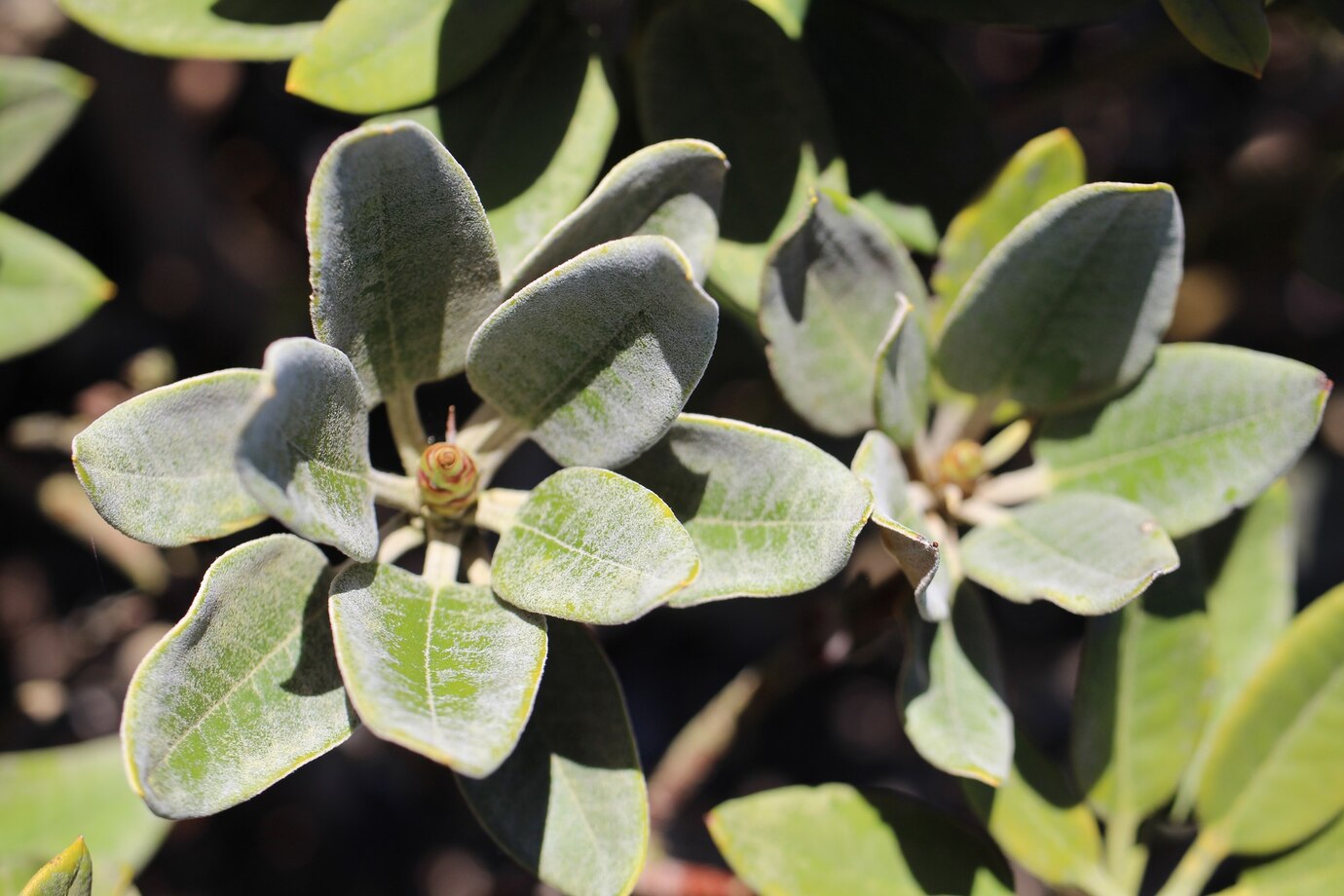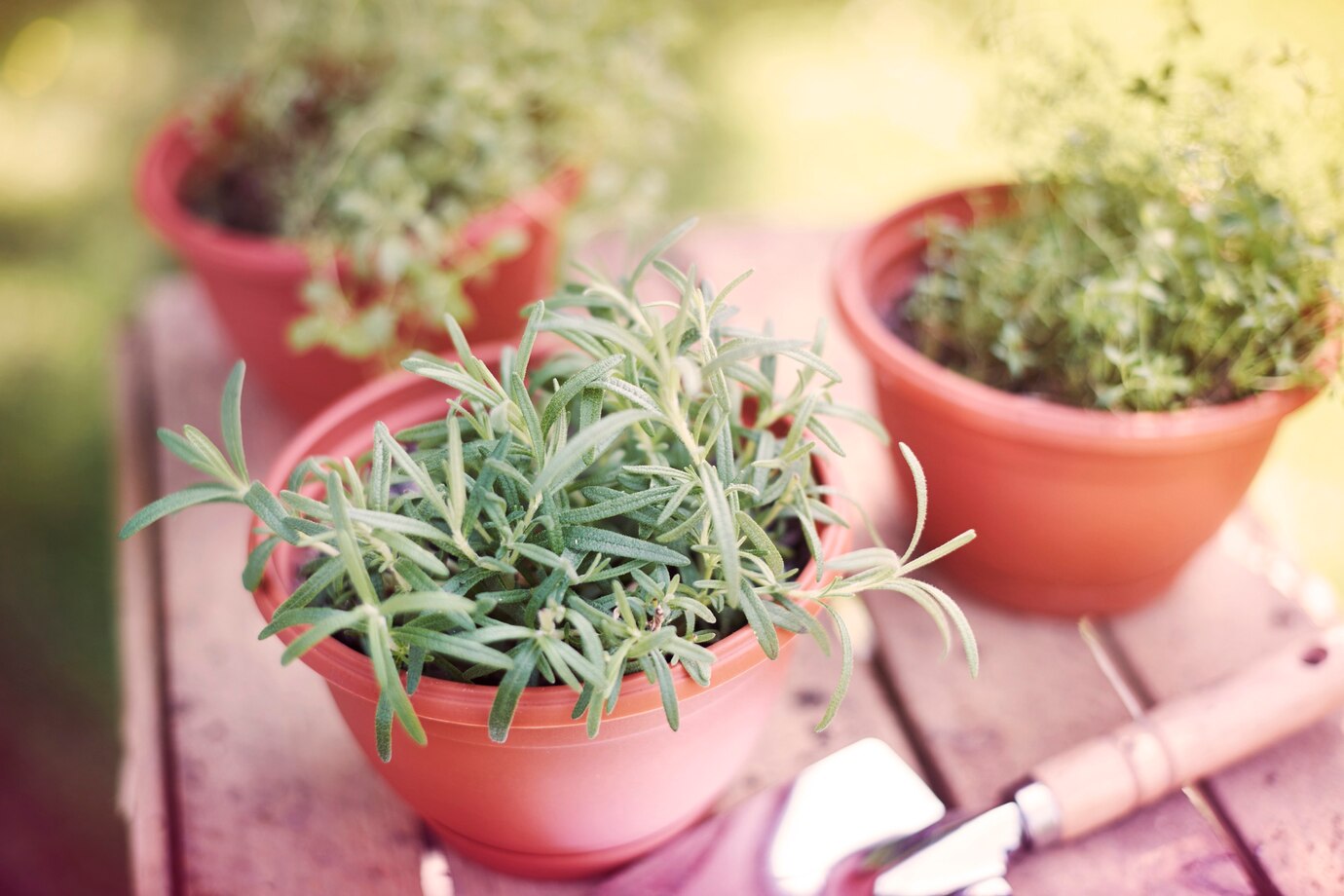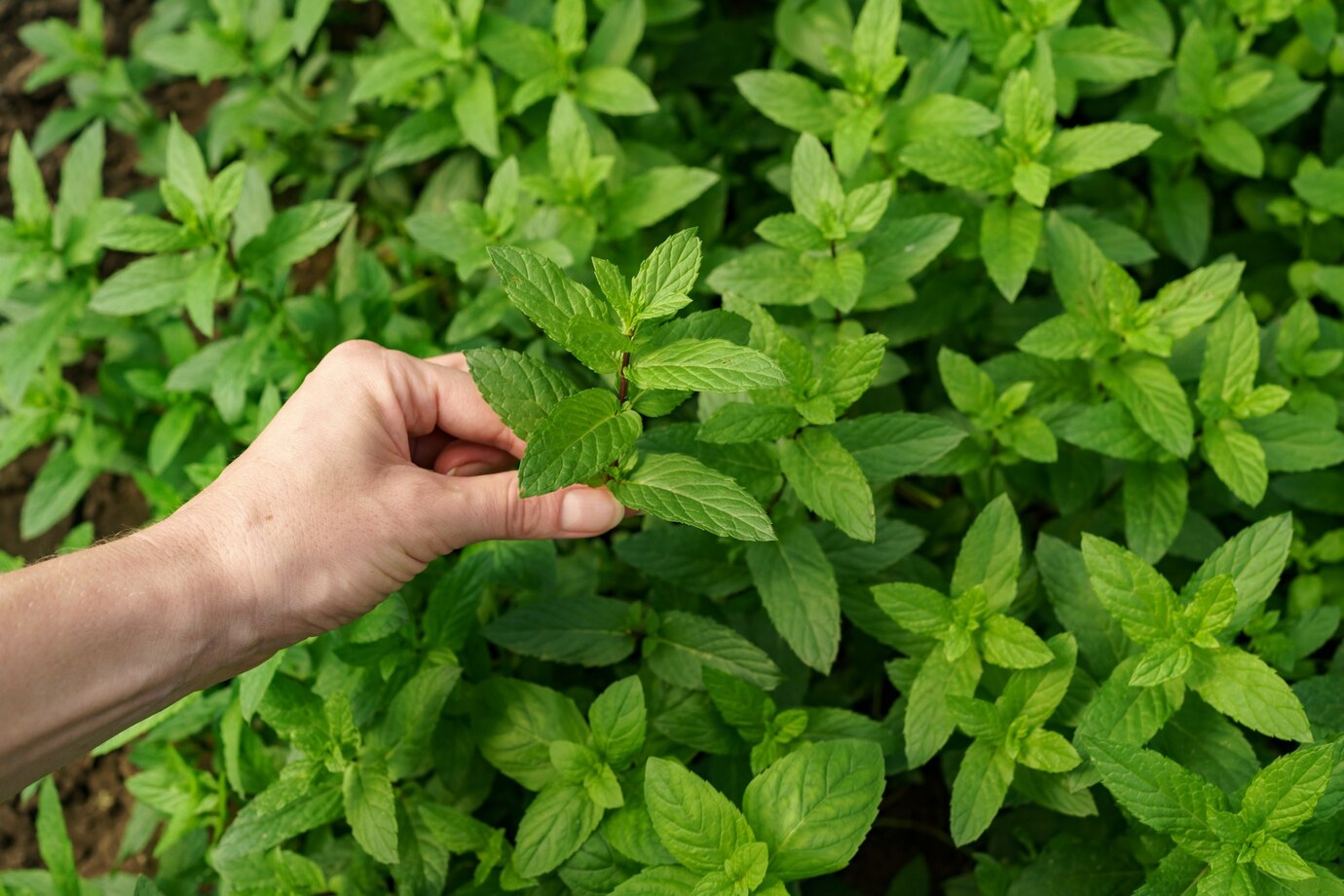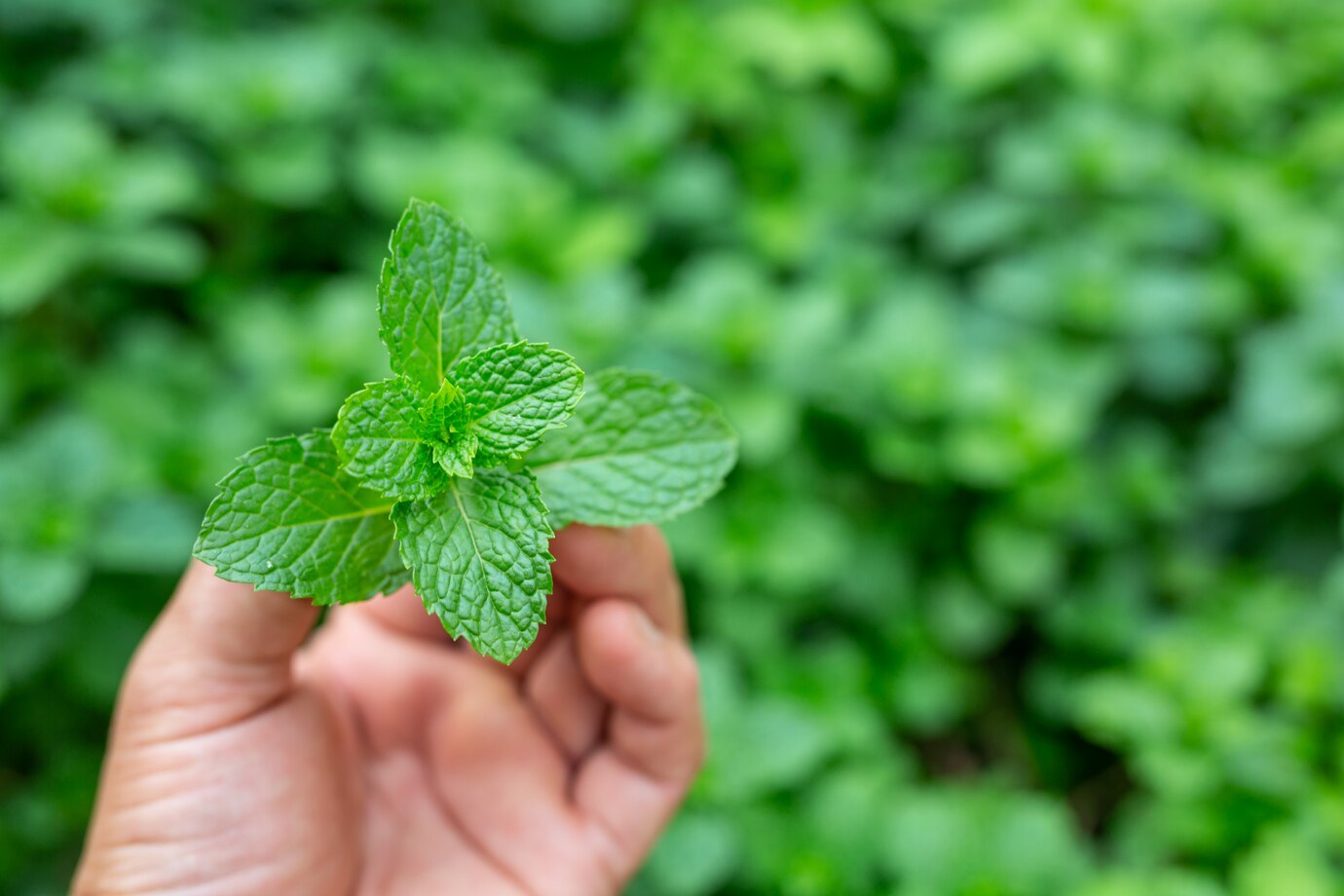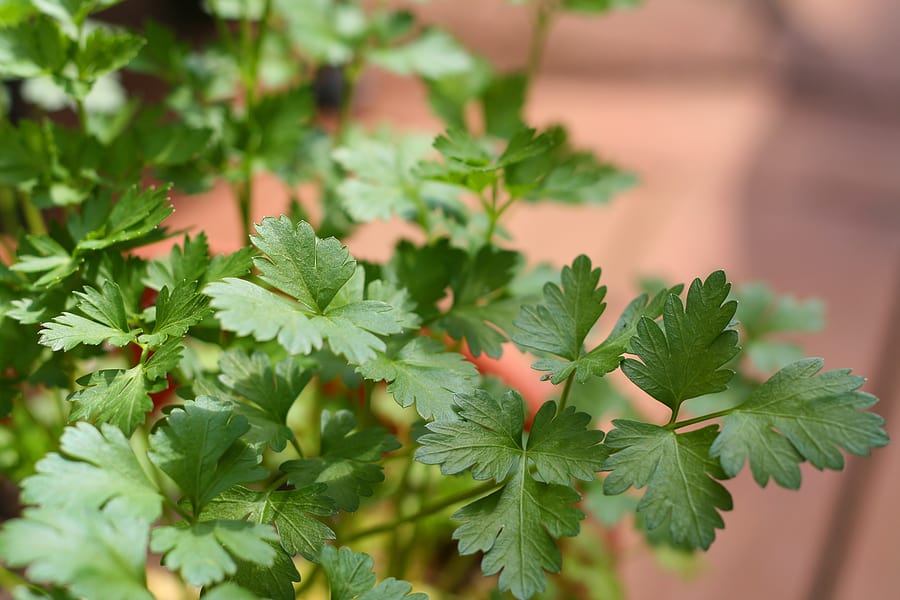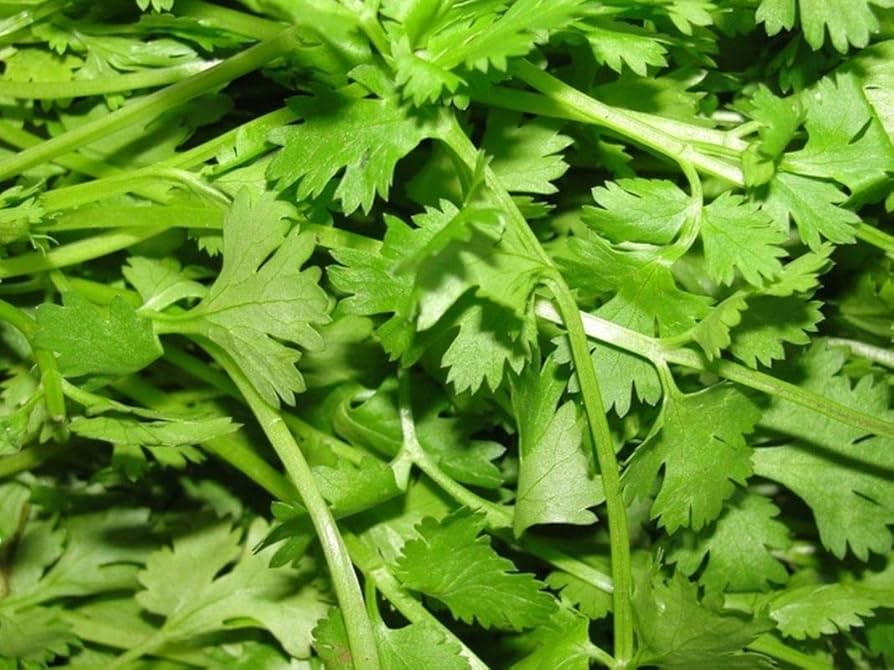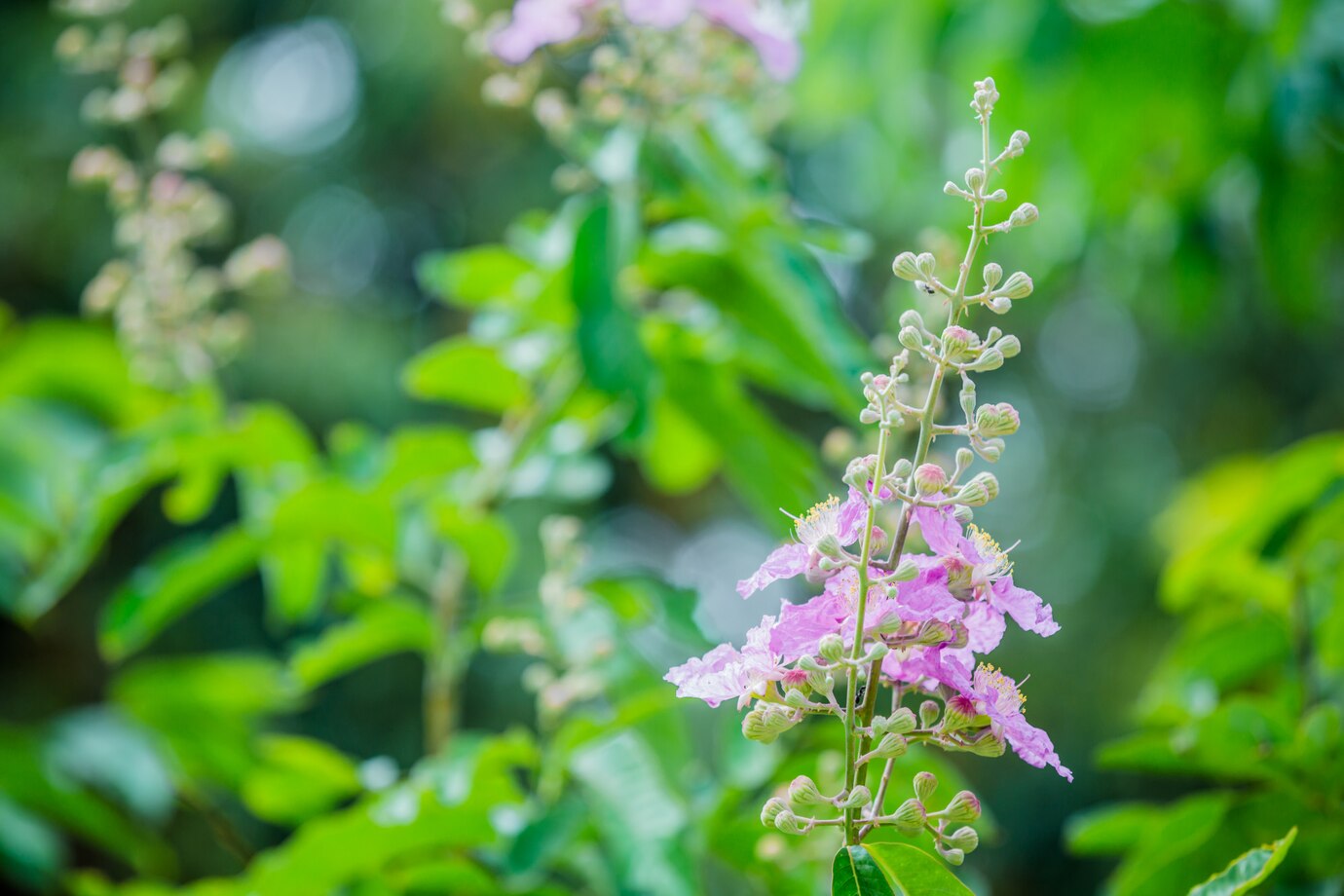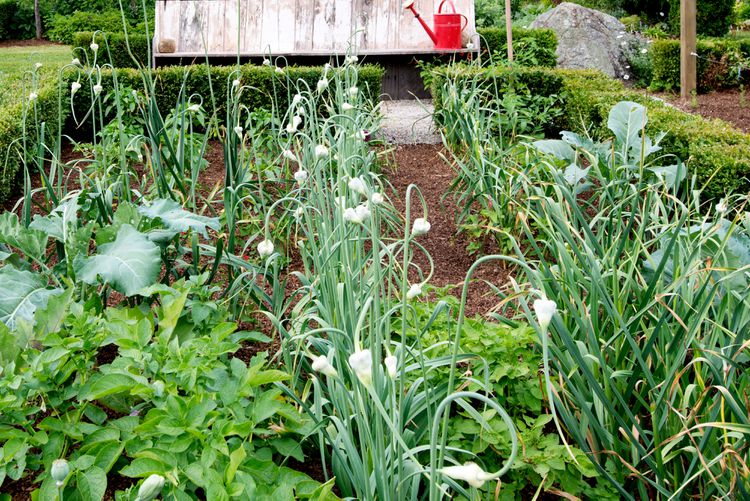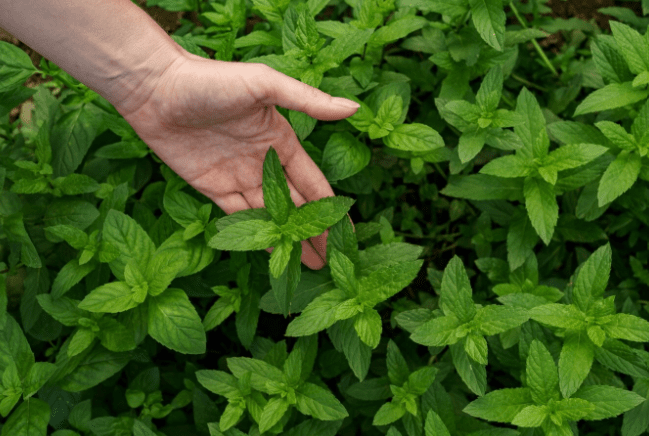Basil is a fantastic herb and an essential choice for anyone looking to grow a bit of their own food. Its fresh leaves offer a rich, delicious flavor and can be used in countless recipes. Plus, basil plants add a lovely touch of greenery, whether you plant them in pots or raised garden beds.
Table of Contents
ToggleTypes of Basil
Basil comes in a wide range of cultivars and related species, each offering its own unique flavor and aroma. Here are a few popular types worth exploring:
Genovese Basil (Ocimum basilicum ‘Genovese’): It is known for its larger leaves and classic, full-bodied flavor. It is a favorite in Italian cooking.
Cinnamon Basil (Ocimum basilicum ‘Cinnamon’): This striking variety features green leaves, purple blooms, and a warm, spicy cinnamon fragrance.
Lemon Basil (Ocimum basilicum x citriodorum): A citrus-scented hybrid, lemon basil stands out with its fresh, zesty aroma and flavor.
Thai Basil (Ocimum basilicum var. thyrsiflora): With a slightly sweet, licorice-like taste, this variety is a staple in Southeast Asian cuisine, particularly Vietnamese recipes.
How to Grow Basil
Start basil seeds in batches from spring through summer to keep a steady supply. Once the seedlings are large enough to handle, transfer them into separate pots. Avoid overwatering as basil doesn’t thrive in soggy soil. When harvesting, use scissors or garden snips to cut off the main stem just above a leaf pair. This encourages the plant to branch out, making it fuller and more productive as it grows.
Sowing Seeds
Basil thrives in fertile, well-draining soil and requires a warm, protected location with ample sunlight. However, avoid placing it in the harsh midday sun, as the leaves can scorch. For a long-lasting harvest, your best bet is to grow basil in a greenhouse, polytunnel, or on a bright indoor windowsill.
Start seeds in small pots filled with moist, peat-free seed compost or high-quality multi-purpose compost. Keep them on a warm (around 20°C), sunny windowsill, out of direct sunlight. Water lightly until seeds germinate, and continue watering only when necessary. Once seedlings are strong enough, transfer them to individual pots using a mix of soil-based and multi-purpose peat-free compost. Pinch off the growing tips to encourage fuller, bushier growth.
You can keep basil in pots indoors or move it outdoors in warmer areas between June and August. Choose a sunny, sheltered spot either on the ground or in a container. To help your plants adjust to outdoor conditions, gradually harden them off by placing the pots outside in a lightly shaded area during the day and bringing them back inside at night. Repeat this for about two weeks before planting them out fully.
Care Tips
When learning how to grow basil, make sure to keep the plant well-watered. If the soil becomes too dry, the basil plants can wilt quickly. However, don’t let them sit in soggy conditions, as this may lead to root rot. Water gently and aim to do it before midday to allow the leaves to dry off, which helps prevent fungal problems like botrytis.
If you’re growing basil outdoors, ensure the plants are protected from cold drafts and strong winds. Try to keep water off the leaves while watering to help prevent mold and disease.
Since basil grows rapidly in pots, you’ll likely need to repot it a few times during the season. Once the plant starts to bloom, the foliage can lose flavor and texture. To maintain leaf quality, pinch off flower buds as soon as they appear. Still, near the end of the season, you might let a few blooms develop—they attract pollinators like bees and butterflies.
Basil is a half-hardy annual so that it won’t survive cold weather. As temperatures begin to drop in autumn, bring a few healthy plants indoors. This way, you can continue enjoying fresh basil leaves throughout the winter.
Pests and Diseases
Keep an eye out for snails and slugs. Basil can also attract pests such as whiteflies and red spider mites. Fungal issues such as grey mould and powdery mildew may also affect basil plants, especially in poorly ventilated spaces. To prevent this, make sure your basil has plenty of airflow, particularly if you’re growing it under cover.
Harvesting and Storing Basil
Harvest basil leaves and growing tips regularly during the summer to keep your plants productive and healthy. You can pick generously, just be sure to leave at least three pairs of side shoots so the plant continues to grow. Avoid washing the leaves until you’re ready to use them, as moisture can cause them to become slimy.
Basil is best enjoyed fresh. It doesn’t hold its flavor or texture well when dried or frozen. For short-term storage, place freshly cut stems in a glass of water in a cool area. Change the water daily to keep the leaves fresh for a few days.
FAQs
Is basil easy to grow?
Yes, basil is one of the easiest herbs to grow even beginners can have success with it.
How long does it take to grow basil?
Basil usually takes around three to four weeks from seed to harvest.
Does basil come back every year?
No, basil is an annual herb. You’ll need to sow fresh seeds or plant new seedlings each spring.

